9 Symptoms of a Bad MAP Sensor (and Replacement Cost)
Got engine trouble? A faulty MAP sensor could be the culprit, and knowing that could save you some cash.
We’ll explain how this inexpensive type of sensor works and go over the most common symptoms of failure so you can arm yourself with the knowledge to diagnose and possibly even to fix the issue yourself. Or at the very least, you’ll avoid being taken advantage of at the repair shop.

How a MAP Sensor Works
Combustion engines are really just fancy air pumps. The measurement determined by the MAP sensor is an approximation of the density of air inside the engine at a given point in time, and is used by the ECU in its volumetric efficiency (VE) table.
The volumetric efficiency table is a 3D graph that represents how much air the engine can move at a given air density and engine speed. The ECU then uses this table in a fueling equation to calculate how much fuel should be injected at any given point in time.
Keep in mind that the amount of air in the engine is determined by how far you push the gas pedal (throttle) down. The gas pedal controls the throttle plate, which blocks air to the intake manifold.

When the throttle plate is fully open on a naturally aspirated vehicle (a vehicle without a turbocharger or supercharger), the intake manifold absolute pressure will be approximately equal to the ambient atmospheric pressure.
These vehicles require a MAP sensor that accurately measures up to 1 bar or more, since 1 bar is roughly equivalent to atmospheric pressure at sea level.
A vehicle with forced induction will require a MAP sensor that can read accurately up to 2 bar or sometimes more, depending on how much boost the vehicle makes. For every 14.5 psi of boost, the MAP sensor needs to be able to read accurately 1 bar higher.
Many modern turbocharged cars run around 20 psi of boost, which would require a 3 bar MAP sensor.
As the name implies, MAP sensors read an absolute pressure, so they never read in a negative number the way a vacuum or a boost gauge would. A MAP reading of 0 bar would represent a perfect vacuum.
Some vehicles equipped with a MAP sensor also have a mass airflow (MAF) sensor, which gives a much more accurate reading of air density that is not affected by changes in ambient temperature.
Those vehicles without a MAF sensor usually have an IAT sensor to help compensate for air density estimation errors that occur due to ambient air temperature.
Bad MAP Sensor Symptoms
If the MAP sensor has malfunctioned, the consequence is usually an improper air fuel mixture. Depending on how the sensor has failed, the air fuel mix could end up being too rich (too much fuel) or lean (too little fuel).
The ECU may try to fall back on other sensors to compensate for the erroneous readings or complete lack of data. One such sensor is the O2 sensor. Placed in the vehicle’s exhaust system, an O2 sensor reads the amount of oxygen in the burnt air fuel mixture to determine if the burn is rich, lean, or just right.
Below are 7 of the most common signs indicating a faulty MAP sensor.
See Also: DTC P2004 (Intake Manifold Runner Control Stuck Open)
#1 – Rich Air Fuel Mixture
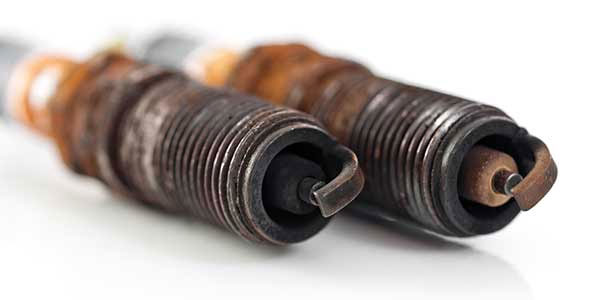
If the air fuel mix is excessively rich, the following may occur:
- The spark plugs may foul.
- Carbon deposits may build up faster.
- The catalytic converter could become clogged.
- The exhaust may have a strong smell of gasoline.
- Fuel economy will suffer.
#2 – Lean Air Fuel Mixture
If the air fuel mix is excessively lean, the consequences can be even worse:
- Leaner combustion is hotter, which could damage or shorten the life of engine components from excessive heat over time.
- Leaner air fuel mixtures also produce more harmful emissions, such as carbon monoxide (CO) and nitrogen oxide (NOx).
- Predetonation (also called engine knock) is more likely to occur. If knock happens under load, it could cause a catastrophic failure, costing you the whole engine.
#3 – Poor Fuel Economy

One common symptom of a bad MAP sensor is worse than usual gas mileage. When the sensor has issues, it can send incorrect signals to your vehicle’s engine management system. As a result, your engine may use more fuel than usual, and this can lead to a decrease in your fuel economy.
#4 – Check Engine Light
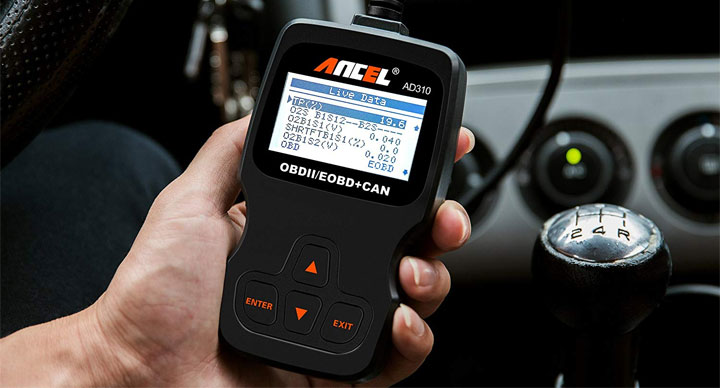
If your vehicle has an OBD2 port (1996 or newer), it may throw a check engine light if it detects an issue with the MAP sensor. Common issues include DTC P0106, DTC P0107, DTC P0133 and or for vehicles with a turbocharger/supercharger, DTC P0299.
Get the code read at a shop or auto parts store (or at home if you own a scan tool) to determine if the check engine light was a result of a faulty MAP sensor.
#5 – Misfires

If your vehicle is no longer running an ideal air fuel mixture, it is possible that your engine is struggling to maintain complete combustion. If incomplete combustion occurs, this will result in misfires. Sometimes these will also throw their own check engine lights.
#6 – Failed Emissions Test
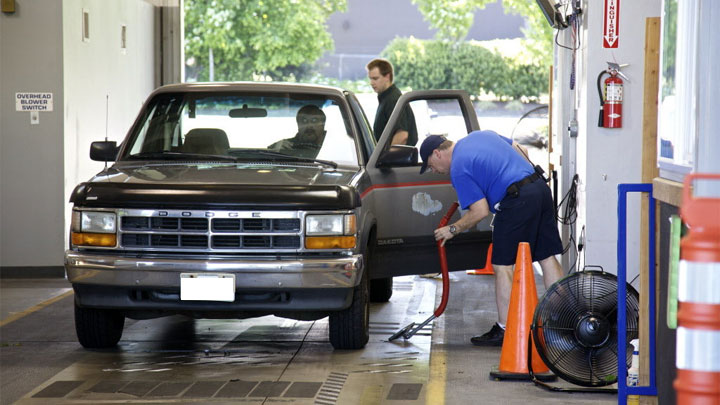
If you live in an area that requires you to pass an emissions test in order for you to register your vehicle, a failed MAP sensor will likely cause your vehicle to fail due to the increased presence of noxious gasses or the check engine light.
#7 – Rough Idle
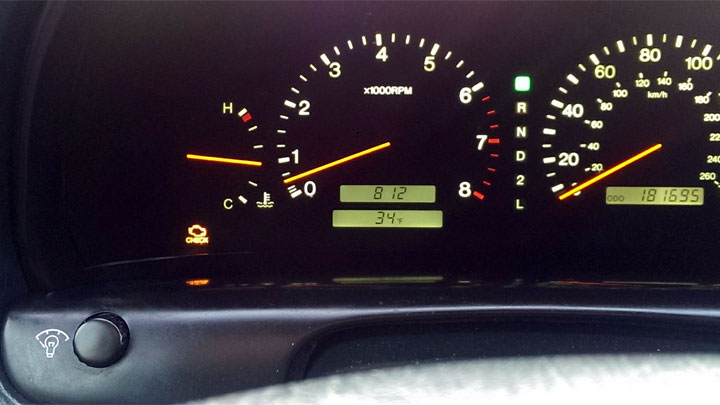
An improper air fuel ratio may also cause excessive engine vibrations when idling or random jumps in idle speed.
#8 – Stumbling, Hesitation, or Stalling

When you stab the gas pedal to pass quickly or pull out in front of traffic, you may notice the engine bog, hesitate, stumble, or stall.
These are all symptoms that something’s not quite right with the air fuel mixture, and the sudden introduction of a whole lot of air has made it more difficult for the engine to keep up with the sudden requested load.
#9 – Hard Starting
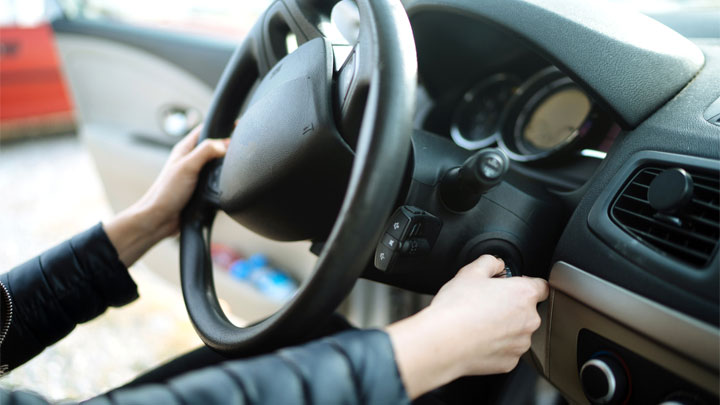
Since the MAP sensor is responsible for monitoring intake manifold pressure, it plays an important role in the air-fuel mixture that enters the engine.
If the sensor is delivering inaccurate information, your engine may struggle to maintain the proper air-fuel ratio, causing hard starting or even stalling. This can be particularly noticeable when the engine is cold or during rapid changes in temperature.
MAP Sensor Replacement Cost
Best places to order parts? See: 19 Best Online Auto Parts Stores
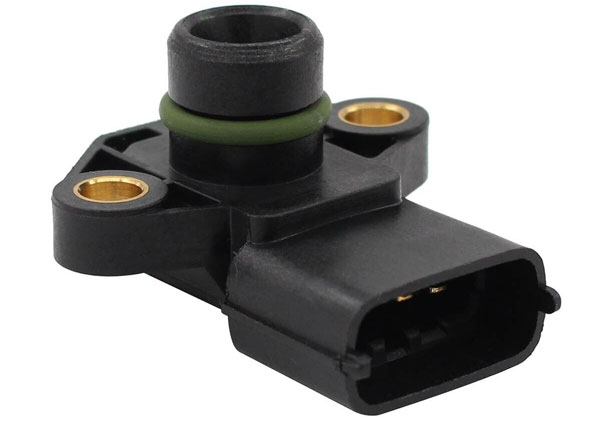
If you’ve determined your MAP sensor has gone bad, fear not – replacing the sensor should be relatively cheap and simple. In fact, most people could probably handle this one in their own garage and save a bunch of money.
The MAP sensor usually sits in an easy to reach area, on or near the intake manifold. The sensor itself will cost you anywhere from $30 to $200, depending on your vehicle and if you use OEM or aftermarket parts.
If you go to a mechanic or dealership to have the MAP sensor replaced, tack on another $40 to $60 or so in labor cost. Even though it should only take a few minutes to replace, most shops usually have a minimum labor charge. This makes DIY replacement the best option in most cases.
Sometimes MAP sensors are connected to the intake manifold via a vacuum hose. If this hose has a vacuum leak, replacing the hose for less than $10 may solve the problem altogether.
Consult a factory-style manual (such as Haynes or Chilton) for information on how to replace a MAP sensor on your specific vehicle.
Testing and Diagnosing a Bad MAP Sensor
If you suspect that your MAP sensor might be acting up, diagnosing a bad sensor is easier than you think. Let’s break down the process into a few casual steps to help you test and diagnose the issue.
- First things first, grab your trusty scan tool. Plug it into your vehicle’s diagnostic port and check for any stored trouble codes. If you see a code related to the Manifold Absolute Pressure (MAP) sensor, it’s a good indication that there might be a problem.
- Next, locate your MAP sensor, which is typically located on or near the intake manifold. With your engine off, unplug the electrical connector from the sensor.
- Using a voltmeter, set it to the DC voltage setting, and connect the red probe to the sensor’s reference wire (usually the middle one) and the black probe to the ground. You should see a reading close to 5 volts. If you don’t, there may be an issue with your vehicle’s engine control module (ECM).
- Now, start your engine and let it idle.
- Reconnect the electrical connector to the MAP sensor, and backprobe the signal wire using your voltmeter’s probes. You should see a voltage that corresponds to the engine load. This can be anywhere between 0.5 and 4.5 volts, depending on your vehicle and engine type.
- Keep an eye on the voltmeter as you gently press the accelerator pedal, watching how the voltage increases as the RPMs increase. If you notice any inconsistent changes in voltage or the MAP sensor doesn’t respond to changes in RPM or throttle position, there’s a good chance that the sensor is faulty.
Cleaning a MAP Sensor
To get some extra life out of your MAP sensor (an MAF sensor for that matter), you can clean it! It’s a relatively easy task to do. Here’s how:
- First things first, grab some basic tools like a screwdriver, a small brush (or toothbrush), and electronic cleaner (CRC is great for this). Before starting, make sure your engine is cool to avoid any potential burns and ensure your vehicle is parked in a well-ventilated area.
- Locate the MAP sensor under your hood, typically near the intake manifold. Because every vehicle may be slightly different, it’s best to have a model-specific service manual for this process (and any other maintenance process for that matter).
- Once you’ve found it, gently remove the electrical connector by pressing down on the release tab and pulling the connector away from the sensor.
- This is a great opportunity to check the connector for any signs of damage or corrosion – if you spot any, you’ll want to address it before moving forward.
- Grab your screwdriver and remove the screws holding the MAP sensor in place. Take it out carefully to avoid damaging it or the surrounding components. With the sensor in hand, give it a close inspection for any signs of dirt, grime, or buildup on the sensor’s surface.
- Use your small brush and electronic cleaner to gently scrub away any dirt or grime you find on the MAP sensor. Be sure to be gentle and not apply excessive pressure – you don’t want to damage the sensor.
- Once cleaned, let the sensor air dry completely before reinstalling.
- Finally, reinstall it by following the removal steps in reverse order. Secure the sensor using the screws you removed earlier and reconnect the electrical connector.
FAQs
What Occurs When I Unplug My MAP Sensor?
When you unplug your MAP sensor, your car’s engine control unit (ECU) receives incomplete data about the air pressure in your engine. This can affect the air-fuel mixture and ignition timing, resulting in poor fuel economy, decreased engine performance, and a rough idle. In some cases, your car might experience stalling or even fail to start.
Can a Malfunctioning MAP Sensor Impact My Transmission?
Yes, a malfunctioning MAP sensor can indirectly impact your transmission. Since the MAP sensor plays a role in managing your engine’s performance, any issues with it can lead to imbalanced air-fuel mixtures and improper ignition timing.
These factors can put extra stress on your transmission, causing it to shift erratically or not shifting at all.
Is There a Specific Code for a Defective MAP Sensor?
There are specific diagnostic trouble codes (DTCs) related to a defective MAP sensor. Some of these codes include P0105, P0106, P0107, P0108, and P0109, among others.
If your car’s check engine light is on, you can use a scan tool or have a mechanic (or some auto parts stores) scan it for you.
- Replace the Engine or Replace the Car? (11 Factors to Consider) - Apr 11, 2024
- Plastic Piece Dragging Under Your Car? (What It Is and What To Do) - Mar 21, 2024
- Timing Belt vs Timing Chain (What’s the Difference?) - Feb 27, 2024

Hi there can u pls tell me if my map sensor has gone has my car drives ok till I get to traffic lights or a junction when I have to stop then it stalls …?? Could it be my map sensor
You’ll probably have a check engine light for a bad MAP sensor. Have you checked the idle air control valve (IAC)? This is a possible cause. The IAC controls your idle as you turn accessories on and off, such as the headlights and air conditioning. Is the vehicle more likely to stall when you run the air conditioning?
Hi
I recently bought a Mazda Bj5W car and found below.
1. High fuel consumption
2. RPM level droping and increasing suddenly when drive
3.cant reach to tiny mountant and RMP droping slowing down engine
Have you scanned for codes?
can an engine turn off while the car going because of a bad MAP?
My car has a probem. it turns off when i’m driving it and stops in the middle of the road. it takes over 10 mins to start again and i have to press the throttle.
It’s possible, but it sounds like you may have something else going on if pressing the throttle helps. Is it idling rough?
Hi having problems with code p0123 an p0222 it keeps giving the tps sensors what can i do
It could be an issue with the throttle position sensor itself, or an issue with the wiring between the throttle position sensor and the ECU. If you are handy with a multimeter, the factory service manual should have more information on expected voltages from the throttle position sensor. You can test the sensor and the electrical connector for proper operation.
If this type of diagnostic work is outside your comfort zone, it would probably be best to bring it by a shop to make sure the throttle position sensor is working correctly. It’s not a component you want to ignore.
Car is a 58 plate 1.3cdti corsa it drives fine until hit 3000rpm the spanner light comes . Doesn’t in any gear go over 3000rpm just like sort of stops trying to go faster unless downhill will push a tiny bit more rpm out does this sound like a 02 sensor/boost sensor
Should the cam sensor and the crank sensor show 5 ramps on the signal side of the sensors with key on engine off?
This will likely depend on your specific vehicle. It would be best to purchase a factory repair manual that has a wiring diagram before diving into that type of troubleshooting. For some vehicles, these manuals can be found for free online.
Vacuum in inches Hg = Barometric pressure (in Hg) – Manifold Absolute Pressure (in Hg).
If barometric pressure is used as a constant (29.9 in Hg at sea level) then as the MAP goes up, the vacuum will go down. As the MAP reading goes down, the vacuum in the manifold goes up.
Example: with no running engine Vacuum = 29.9inHg (barometric pressure) – 29.9in Hg (MAP reading) = 0 in Hg.
This is what you’d read on a scanner and how you would think of what is happening to your engine. This is also what the computer needs in order to make decisions about maintaining the vacuum if you have changes in altitude while driving.